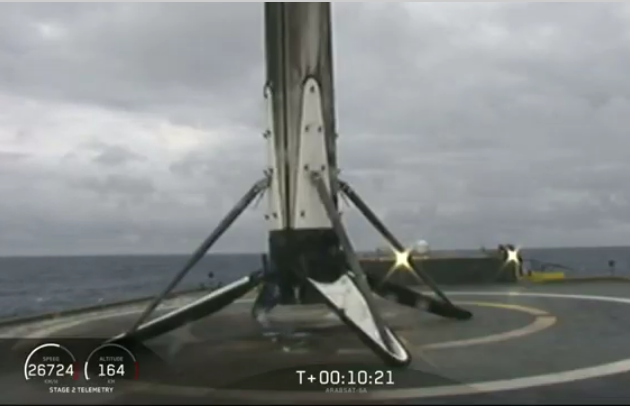Hubble data detects persistent water vapor on one of Europa’s hemispheres
Using data from the Hubble Space Telescope spanning sixteen Earth years, scientists have detected the presence of water vapor on Europa, but strangely spread only across one of the moon’s hemispheres.
Previous observations of water vapor on Europa have been associated with plumes erupting through the ice, as photographed by Hubble in 2013. They are analogous to geysers on Earth, but extend more than 60 miles high. They produce transient blobs of water vapor in the moon’s atmosphere, which is only one-billionth the surface pressure of Earth’s atmosphere.
The new results, however, show similar amounts of water vapor spread over a larger area of Europa in Hubble observations spanning from 1999 to 2015. This suggests a long-term presence of a water vapor atmosphere only in Europa’s trailing hemisphere – that portion of the moon that is always opposite its direction of motion along its orbit. The cause of this asymmetry between the leading and trailing hemisphere is not fully understood.
First, it must be emphasized that the amounts of atmospheric water being discussed are tiny, so tiny that on Earth we might consider this a vacuum.
Second, that the water vapor is only seen on the trailing hemisphere suggests there is some sort of orbital influence involved, though what that influence is remains unknown.
Hopefully when Europa Clipper finally arrives in orbit around Jupiter in 2030, with a path that will fly past Europa fifty times, we will some clarity on these questions.
Using data from the Hubble Space Telescope spanning sixteen Earth years, scientists have detected the presence of water vapor on Europa, but strangely spread only across one of the moon’s hemispheres.
Previous observations of water vapor on Europa have been associated with plumes erupting through the ice, as photographed by Hubble in 2013. They are analogous to geysers on Earth, but extend more than 60 miles high. They produce transient blobs of water vapor in the moon’s atmosphere, which is only one-billionth the surface pressure of Earth’s atmosphere.
The new results, however, show similar amounts of water vapor spread over a larger area of Europa in Hubble observations spanning from 1999 to 2015. This suggests a long-term presence of a water vapor atmosphere only in Europa’s trailing hemisphere – that portion of the moon that is always opposite its direction of motion along its orbit. The cause of this asymmetry between the leading and trailing hemisphere is not fully understood.
First, it must be emphasized that the amounts of atmospheric water being discussed are tiny, so tiny that on Earth we might consider this a vacuum.
Second, that the water vapor is only seen on the trailing hemisphere suggests there is some sort of orbital influence involved, though what that influence is remains unknown.
Hopefully when Europa Clipper finally arrives in orbit around Jupiter in 2030, with a path that will fly past Europa fifty times, we will some clarity on these questions.

